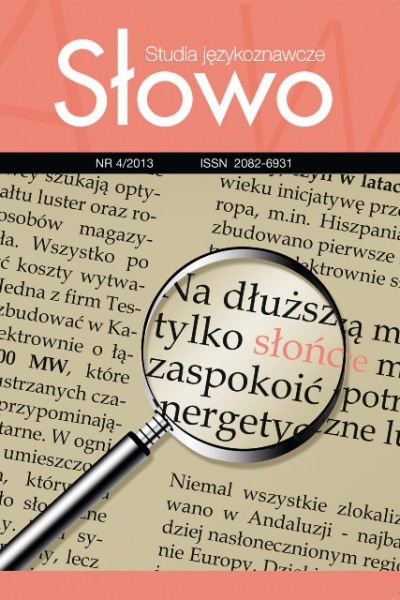Przerwania i urwania jako zakłócenia płynności wypowiedzi mówionej
Abstrakt
The article is about disruptions and aposiopesis – elements that are natural for a spoken language, but which disrupt the fluency of utterance. The main part of the article is devoted to classification and interpretation of the disruptions phenomena. It shows a detailed analysis of linguistic means that express disruptions and the linguistic reasons for the fact that they appear. The basis of the research is an assumption that the mechanism of creating text is identical with the process of choosing elements and structures (lexical and formal) available in the speaker’s memory. Disruptions and aposiopesis are linguistic manifestations of difficulties when it comes to choosing and constructing appropriate forms. The last part of the article is devoted to an analysis of aposiopesis. The basis of the whole analysis is a recorded utterance of Julian Staniewski, a poet and a mountain guide.
Downloads
Bibliografia
Bąk P., 1974, Przerywniki jako charakterystyczna cecha języka potocznego, „Poradnik Językowy”, z. 1, s. 24–30.
Kita M., 1989, Wypowiedzi przerwane we współczesnym polskim języku potocznym: na materiale autentycznych tekstów potocznych i tekstów beletrystycznych, Katowice.
Labocha J., 1972, Przerwania jako sygnały trudności wyboru leksykalnego i formalnego w polszczyźnie mówionej [w:] Studia nad polszczyzną mówioną Krakowa, red. B. Dunaj, Kraków, t. 1, s. 111–120.
Labocha J., 2004, Tekst pisany – tekst zapisany, „Biuletyn Polskiego Towarzystwa Językoznawczego” LX, s. 5–10.
Rudek-Data K., 1972, Pauza a przerwanie w wypowiedzi mówionej [w:] Studia nad polszczyzną mówioną Krakowa, t. 1, red. B. Dunaj, Kraków, s. 103–108.
Pobrania
Opublikowane
Jak cytować
Numer
Dział
Licencja
Prawa autorskie (c) 2013 Słowo. Studia językoznawcze

Utwór dostępny jest na licencji Creative Commons Uznanie autorstwa – Użycie niekomercyjne 4.0 Międzynarodowe.


